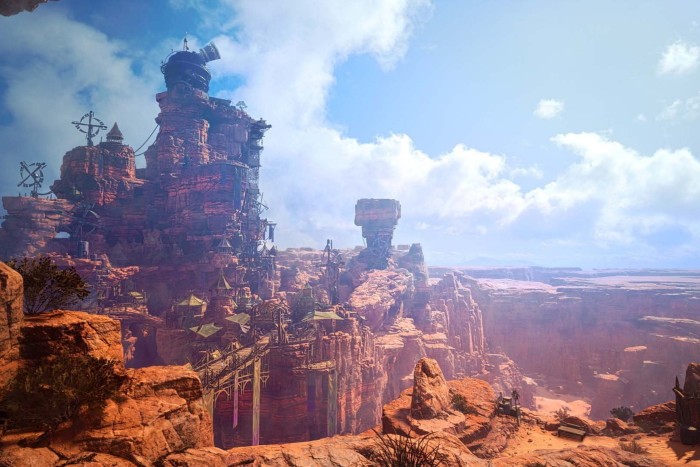Unlock the Editor’s Digest for free
Roula Khalaf, Editor of the FT, selects her favourite stories in this weekly newsletter.
When developer Square Enix decided to remake Final Fantasy VII, it knew it was gambling with gamers’ hearts. The original 1997 role-playing adventure has a plausible claim to being the most beloved video game of all time, admired for its prescient tale of corporate greed and environmental collapse, its memorable cast of characters and its innovative, cinematic storytelling. How could the makers update the story for a new generation without alienating the existing ardent fan base?
They needed to be bold, and bold they were. The reimagined game would be divided into a trilogy and, over the course of the first instalment, 2020’s FFVII: Remake, it became clear that these games would not slavishly follow the original plot. As spiky-haired mercenary Cloud Strife and his gang of eco-activist pals ventured through the slums and power reactors of fictional city Midgar, they occasionally strayed towards narrative paths that deviated from the original storyline before being forced back on track by mysterious hooded figures known as Whispers.
This tension made the game more than a straight remake; it also functioned as a meta-commentary on the nature of sequels and our hunger for the recycling of beloved IP. At its close, the characters broke free, and it seemed as if their next adventure might lead them somewhere entirely new.
Does the second instalment, FFVII: Rebirth, go somewhere new? It depends on your expectations. The game faithfully follows the main story beats and characters of the original game’s second act: you still unwind at the Vegas-like Gold Saucer, take part in the military parade in Junon city and go on a spiritual adventure in Cosmo Canyon. Yet every part of this world has been radically expanded — this game fleshes out an approximately 10-hour stretch of the original into more than 50 hours. Diehard fans will be thrilled at how each element of FFVII has been lovingly, lavishly upgraded, its story now told in ultra-stylish cutscenes with dramatic camerawork and fantastic music. Those less emotionally connected to the original, however, may balk at the sheer volume of content, which is not all of a consistent quality.

The most marked visual change since Remake is that the cramped grey corridors of Midgar have been swapped for a huge open world. Players can range across verdant hillsides, golden shores and lush jungles on the back of a trusty Chocobo, the series’ iconic yellow bird. Environments are rendered with sky-high production values, allowing the player to survey local geography, analyse wildlife and wrangle new Chocobo mounts.
Some of these activities feel worthwhile, including the strategic card game Queen’s Blood or side quests that add depth to the cast, but others, such as tedious tower-climbing and unforgivably janky stealth sections, should have been left on the cutting room floor. Square Enix seems so eager to please that it overstuffs some sections of the game, resulting in quantity over quality.
But if you’re happy with a looser rhythm, Rebirth rewards you with plenty of time to get to know the characters better. With their dewy skin and glistening eyes, they look doll-like, but there’s enough humour and emotive character beats to bring the team to life. Their chemistry is also incorporated into the smart, kinetic combat system, with new abilities allowing team members to join forces against tough enemies.
Those looking for a tight narrative might be disappointed by this game’s leisurely pacing, but for many, seeing the heroes streaking across the plains on their Chocobos, seeking out fresh adventure, is the very essence of Final Fantasy.
★★★★☆
On PlayStation 5






